GipsyDanger_27
ACCESS: Restricted
- Joined
- 18 November 2022
- Messages
- 2
- Reaction score
- 0
Good day everyone. I have a question, is there any unbuilt or other MLRS projects of the US Military beside M270 and HIMARS?
The first one.Do you mean 'Other US MLRS Projects' as in alternative rocket systems or in other launch platforms?
If the latter, LTV proposed a LW-MLRS consisting of a single AT2 launch pack (à la HIMARS, except exposed) mounted on Standard Manufacturing Co.'s Trailing Arm Drive vehicle.
-- https://www.secretprojects.co.uk/threads/standard-manufacturing-co-excalibur.4814/#post-228265
-- https://www.secretprojects.co.uk/th...-himars-developments.39660/page-2#post-546380
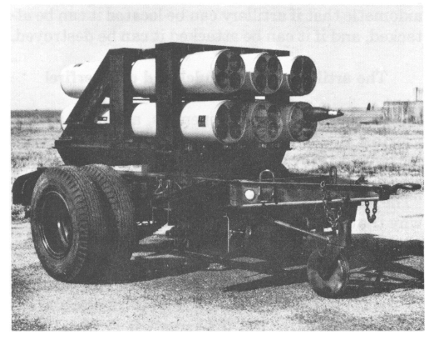
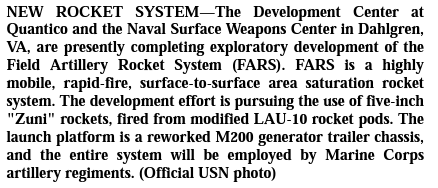
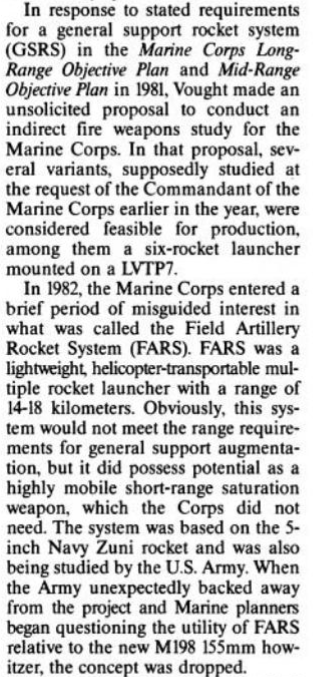
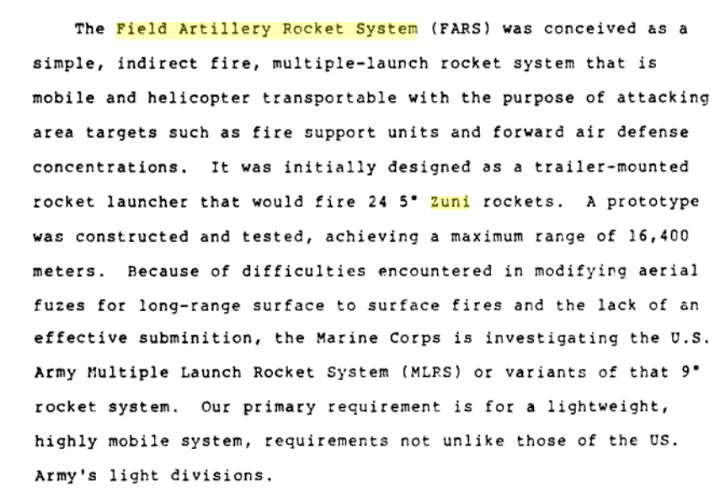
Meanwhile France conceptualized a local HIMARS based on the AMX-10R chassis in 1988...A bit more, from the FY 85 budget, on why they dropped FARS. Basically, Zuni rockets were badly suited to the task, the aerial fuzes didn't work well, and there was no submunition payload. So they wanted to adopt a lightweight MLRS (eventually HIMARS) along the same lines as desired by US Army light forces. This took another 15 years to actually implement...
https://www.google.com/books/edition/Defense_Department_authorization_and_ove/lqMko_rhXIsC?hl=en&gbpv=1&dq="field Artillery Rocket System" Zuni&pg=PA197-IA24&printsec=frontcover
View attachment 694635
Meanwhile France conceptualized a local HIMARS based on the AMX-10R chassis in 1988...A bit more, from the FY 85 budget, on why they dropped FARS. Basically, Zuni rockets were badly suited to the task, the aerial fuzes didn't work well, and there was no submunition payload. So they wanted to adopt a lightweight MLRS (eventually HIMARS) along the same lines as desired by US Army light forces. This took another 15 years to actually implement...
https://www.google.com/books/edition/Defense_Department_authorization_and_ove/lqMko_rhXIsC?hl=en&gbpv=1&dq="field Artillery Rocket System" Zuni&pg=PA197-IA24&printsec=frontcover
View attachment 694635
Here's another one based on the Zuni...kind of. The XM130 Surface-Launched Fuel-Air Weapon, or SLUFAE. Now, that name may bring to mind the exceptionally nasty Russian TOS-1 "Buratino" rocket system that looks like it came right out of one of the old Command & Conquer games and/or its shoulder-fired cousins the RPO-A and RPO-M (all of which are thermobaric weapons, though the Russians categorize them as flamethrowers). But despite the connotations of the name and looking like a Nebelwerfer's bigger and uglier cousin, the SLUFAE was actually designed for rather benign purposes - albeit you still don't want to be downrange from it.Here's one: The Field Artillery Rocket System (FARS), studied in the early 1980s by the US Army and USMC. It was basically six LAU-10 Zuni 4-round, 5-inch rocket pods bolted to an elevating frame on a modified generator trailer. (This would not have been out of place in 2010 Libya.)
View attachment 694627
View attachment 694628
This apparently came at about the same time as an LTV proposal to put a 6-round MLRS pod on an LVT-7 (an amphibian HIMARS analogue 30 years early).

The Marine Corps Gazette
www.google.com
View attachment 694634
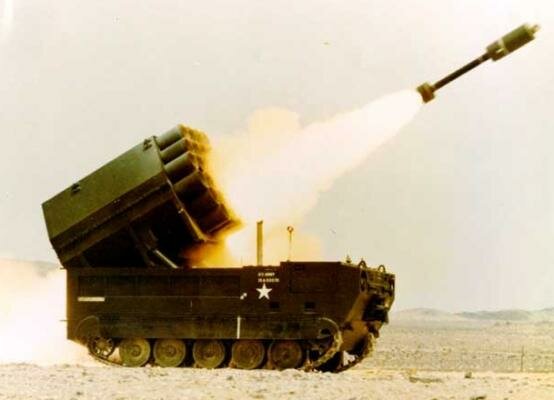
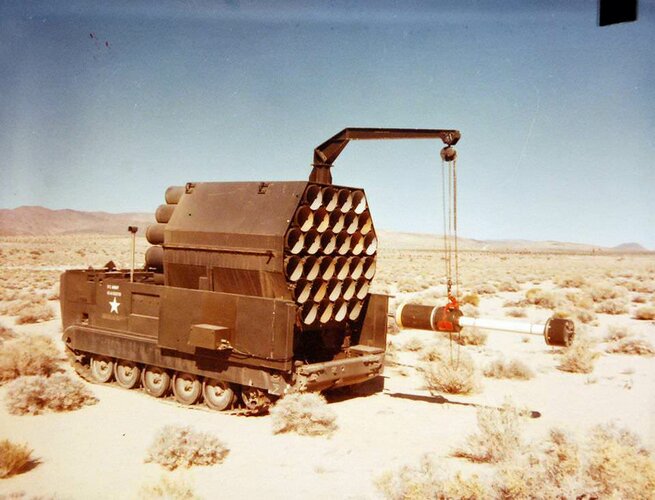
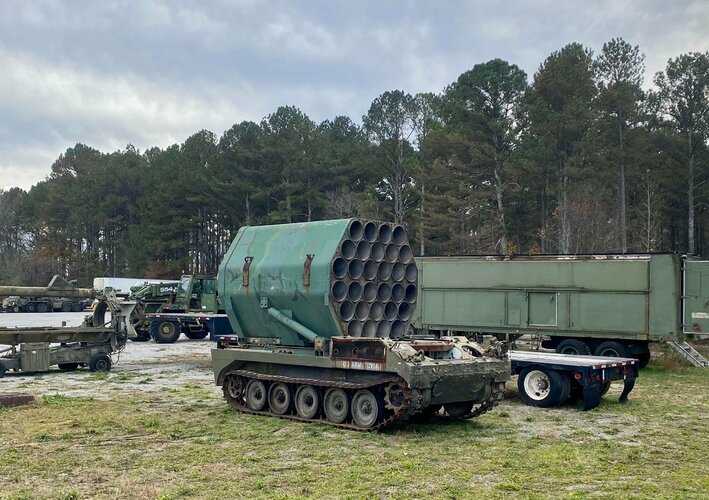
The basic overpressure concept was found to be functional, but the fuel-air device had trouble with frozen or thawing ground impeding the blast wave.
wonder if this creature deserves reconsiderationHere's another one based on the Zuni...kind of. The XM130 Surface-Launched Fuel-Air Weapon, or SLUFAE. Now, that name may bring to mind the exceptionally nasty Russian TOS-1 "Buratino" rocket system that looks like it came right out of one of the old Command & Conquer games and/or its shoulder-fired cousins the RPO-A and RPO-M (all of which are thermobaric weapons, though the Russians categorize them as flamethrowers). But despite the connotations of the name and looking like a Nebelwerfer's bigger and uglier cousin, the SLUFAE was actually designed for rather benign purposes - albeit you still don't want to be downrange from it.
View attachment 694828
The SLUFAE was in fact built as a mine-clearing platform, and more or less made from parts already kicking around the Army/Air Force supply chain. Idea behind it is essentially the same as a MICLIC, clear a path through a minefield by detonating antipersonnel mines with overpressure from an explosive. Except where a MICLIC uses a rope of C4, the SLUFAE produces overpressure with repurposed propane fuel-air bombs (BLU-73/B). The system was based around a 30-tube launcher pod mounted on the back of an M548 cargo carrier (or according to some sources, the M752/688 launcher/carrier for the MGM-52 Lance, but both are just modified M113s), firing a CBU-55 propelled by a Zuni rocket motor.
View attachment 694831
Maximum range was somewhere between 700-1000m, but the accuracy was reportedly crap, on the order of plus/minus 20 meters in range and 8.5m lateral dispersion. The basic overpressure concept was found to be functional, but the fuel-air device had trouble with frozen or thawing ground impeding the blast wave. In a secondary role against unarmored area targets like troop formations, light vehicles and houses, the effects were...pretty much what you'd expect. Testing eventually showed that systems like Giant Viper were more practical than the gigantic XM130, and it was never put into production. A couple inert rockets are around in private collections and museums, and the launcher is in a storage yard at Redstone Arsenal.
View attachment 694833
Are there any Zuni rockets still in production/arsenal?wonder if this creature deserves reconsideration
Are there any Zuni rockets still in production/arsenal?
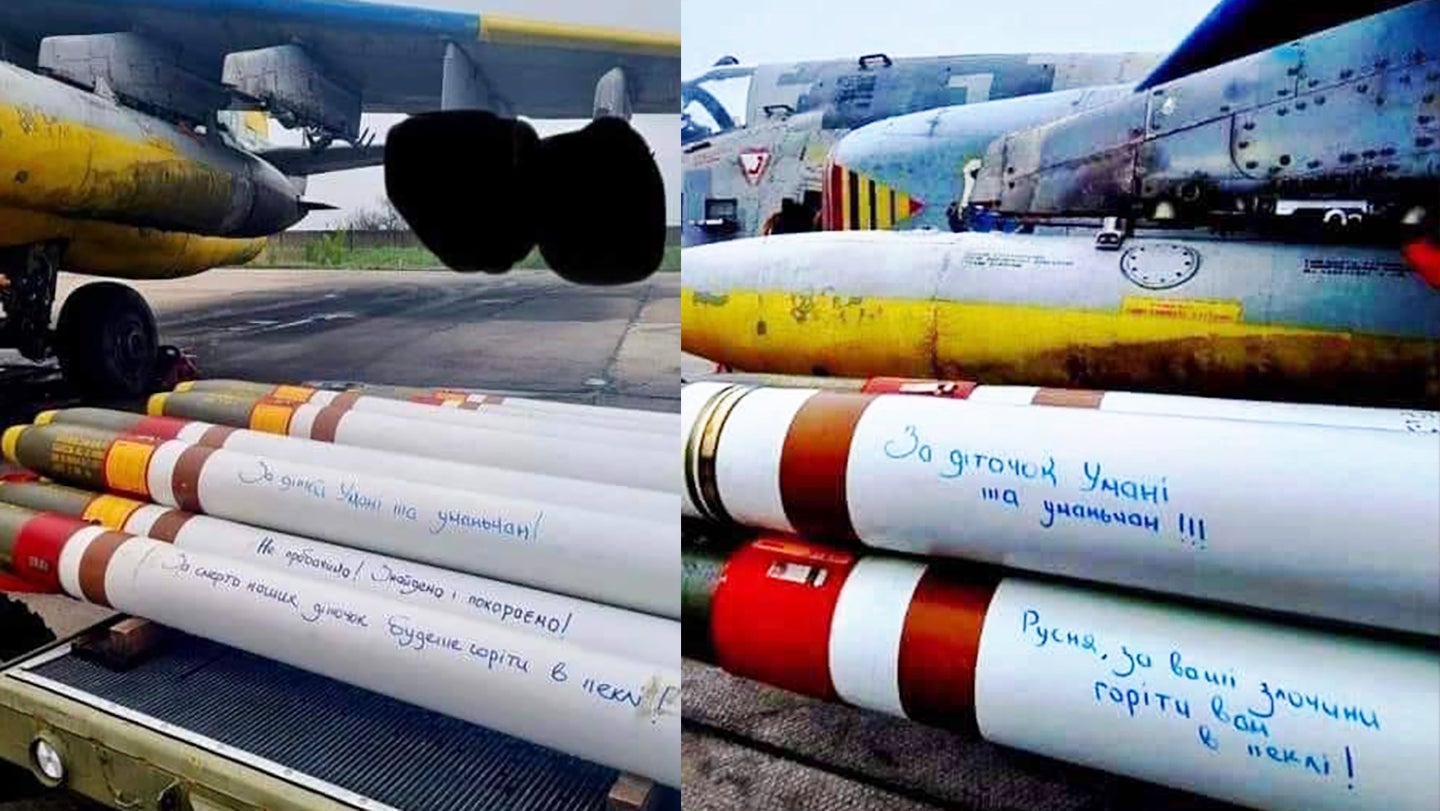
I honestly haven't heard of Zuni rockets getting fired in anger by US forces since Vietnam...We shipped a bunch of Zunis to Ukraine early in the invasion. So they were in inventory somewhere. Probably in USMC war reserve stockpiles.

Evidence Of American Zuni Rockets Arming Ukrainian Su-25s Emerges
The first photos have appeared showing air-launched 5-inch Zuni rockets in Ukraine, apparently arming Su-25 attack jets.www.thedrive.com
I honestly haven't heard of Zuni rockets getting fired in anger by US forces since Vietnam...
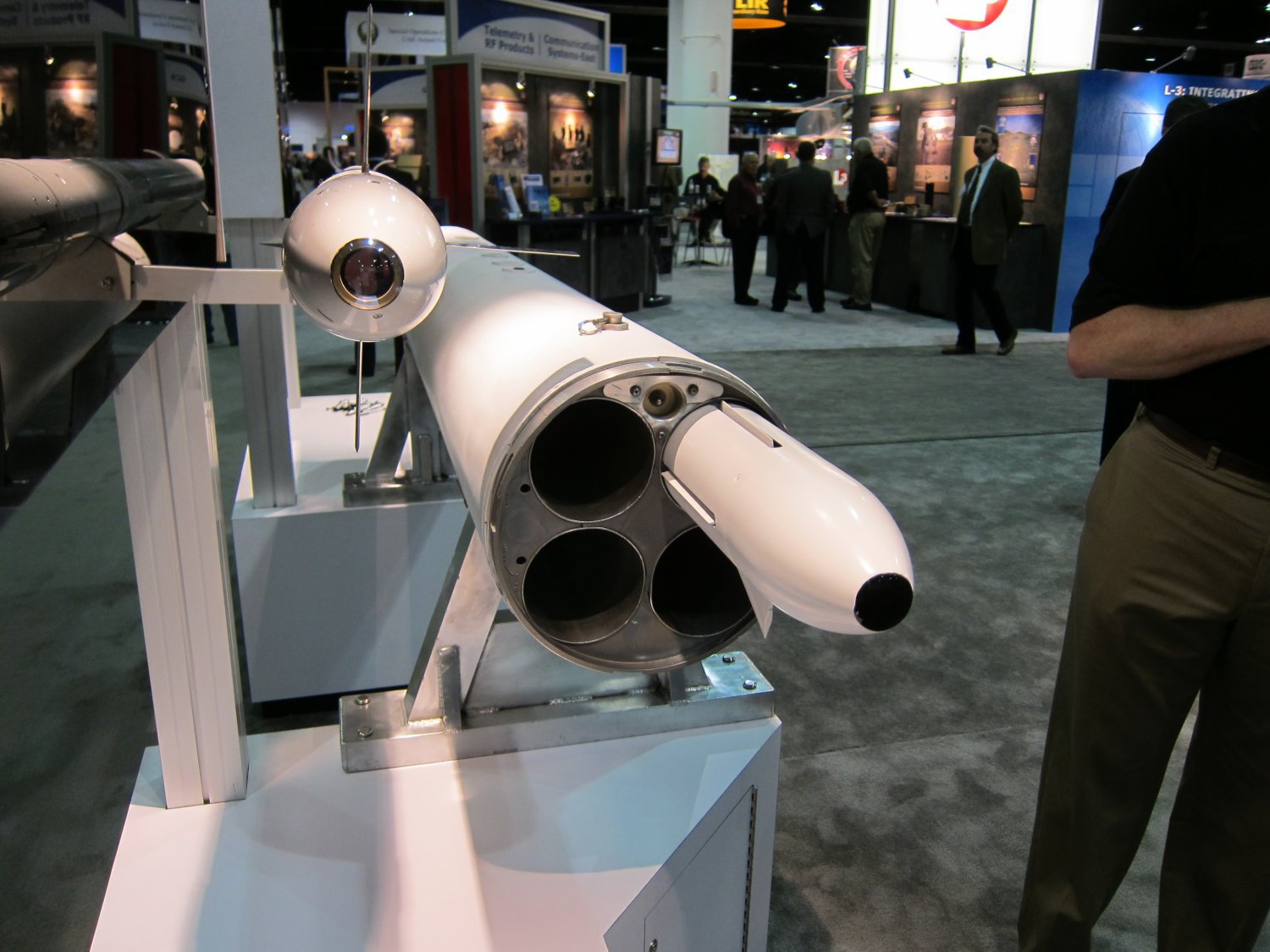
What a surprise, I would have expected Hydra 70s as the marker rockets...Definitely as late as the Battle of Fallujah -- the Marines included Zunis in the standard load out for their F/A-18s in the airborne controller role (suggesting they were used for target marking more than direct attack, I think.)
MBDA and NAWCWD (China Lake) were showing off a guided version for specops customers as recently as 2010. The fact that it was even type-classified suggests (to me) it was pretty close to being in use by someone.

MBDA Semi-Active Laser-Guided Zuni Rocket with 4-Shot LAU-10 Rocket Pod (Launch Pod): Precision-Guided Rockets Get a Big Boost (Photos!)
By David Crane defrev (at) gmail (dot) com All photos contained in this article were taken by DefenseReview.com, and are copyrighted. DefenseReview.com owns the copyright on these photos. The photos were shot with Canon PowerShot S90 10-megapixel digital camera (still camera with video...defensereview.com
It would seem like the major issue for M1 tank & M2 IFV replacement would be the vehicles of the RSV Companies supporting these manned vehicles. A type of offset APS for the new conflict realities. A next generation MICLIC w/ longer range, smaller diameter but more explosive power line carrying charges msle/rkts.wonder if this creature deserves reconsideration
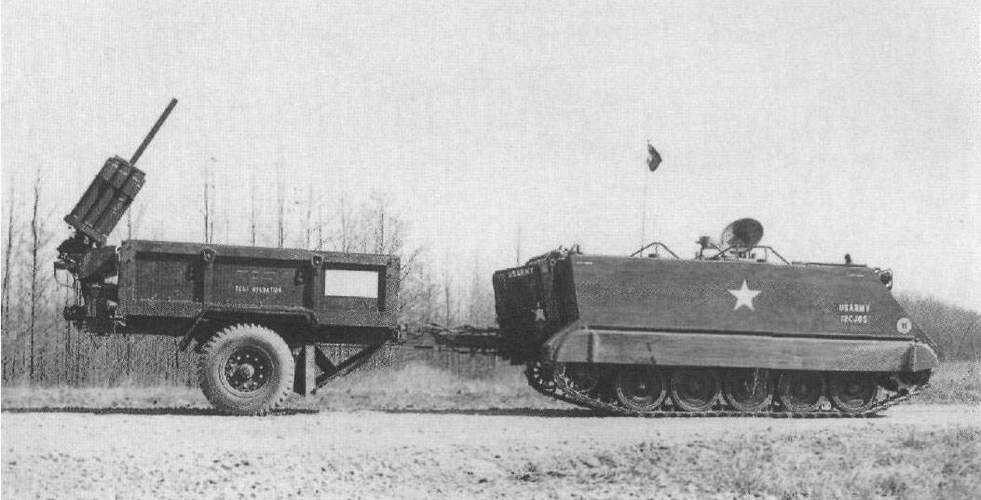
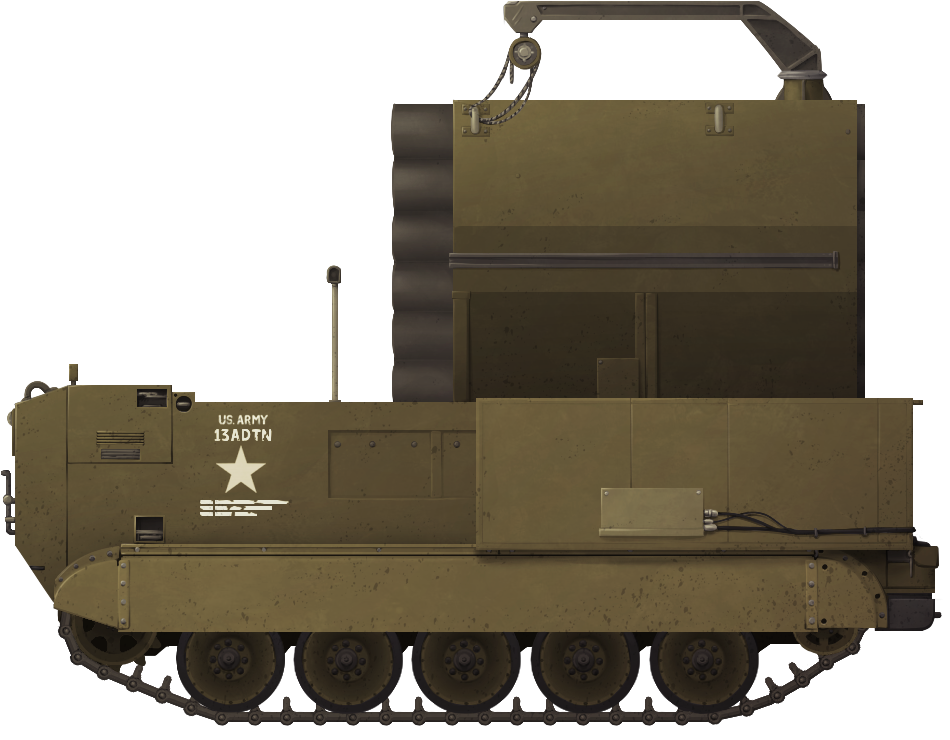
 tanks-encyclopedia.com
tanks-encyclopedia.com
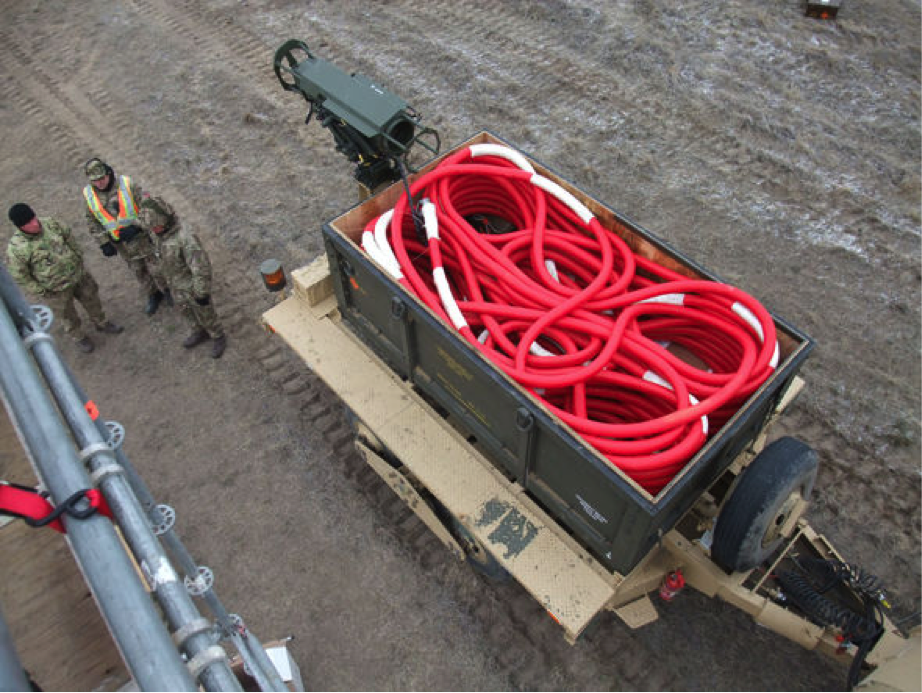

 tanks-encyclopedia.com
tanks-encyclopedia.com
